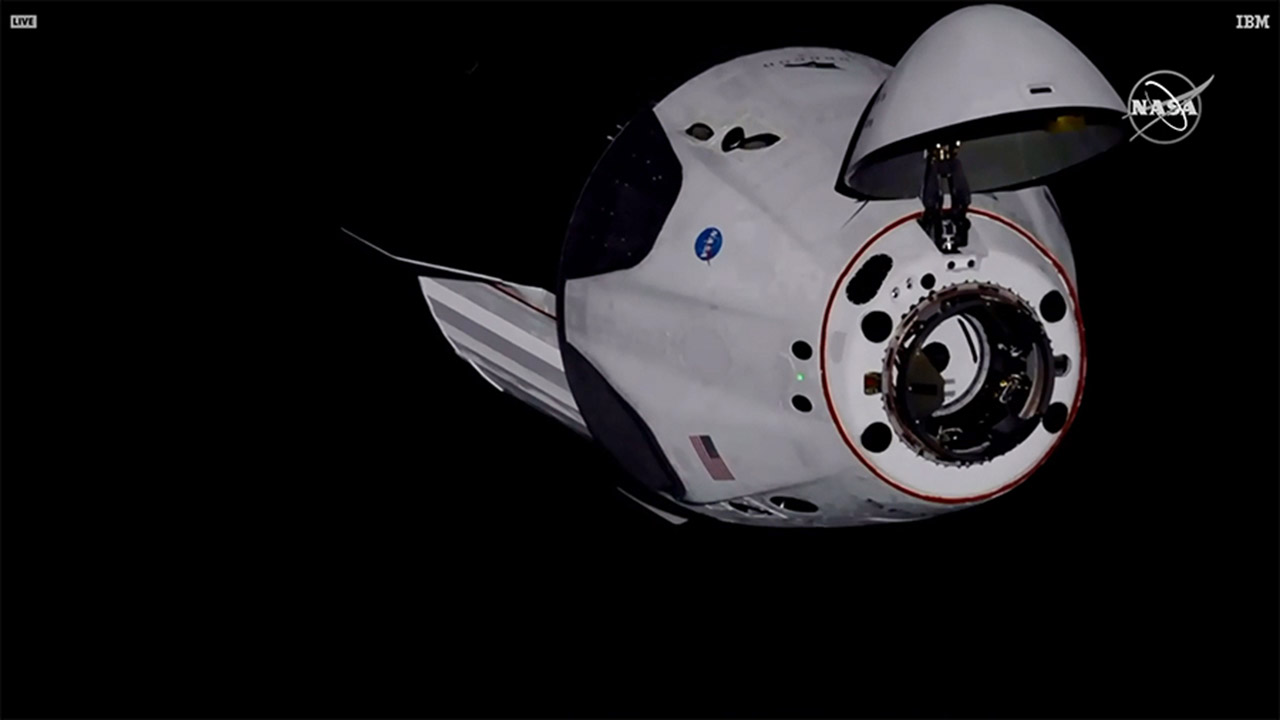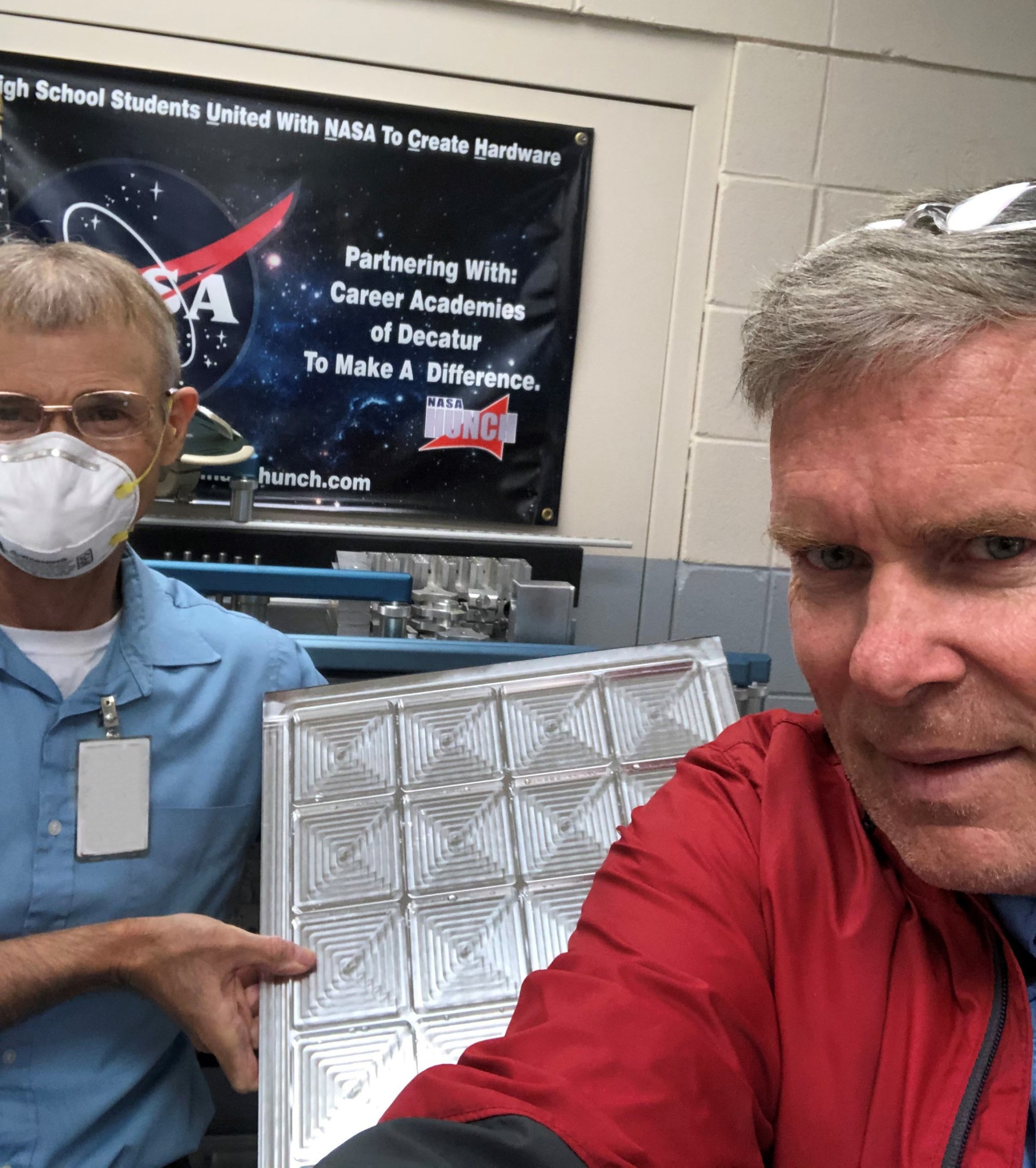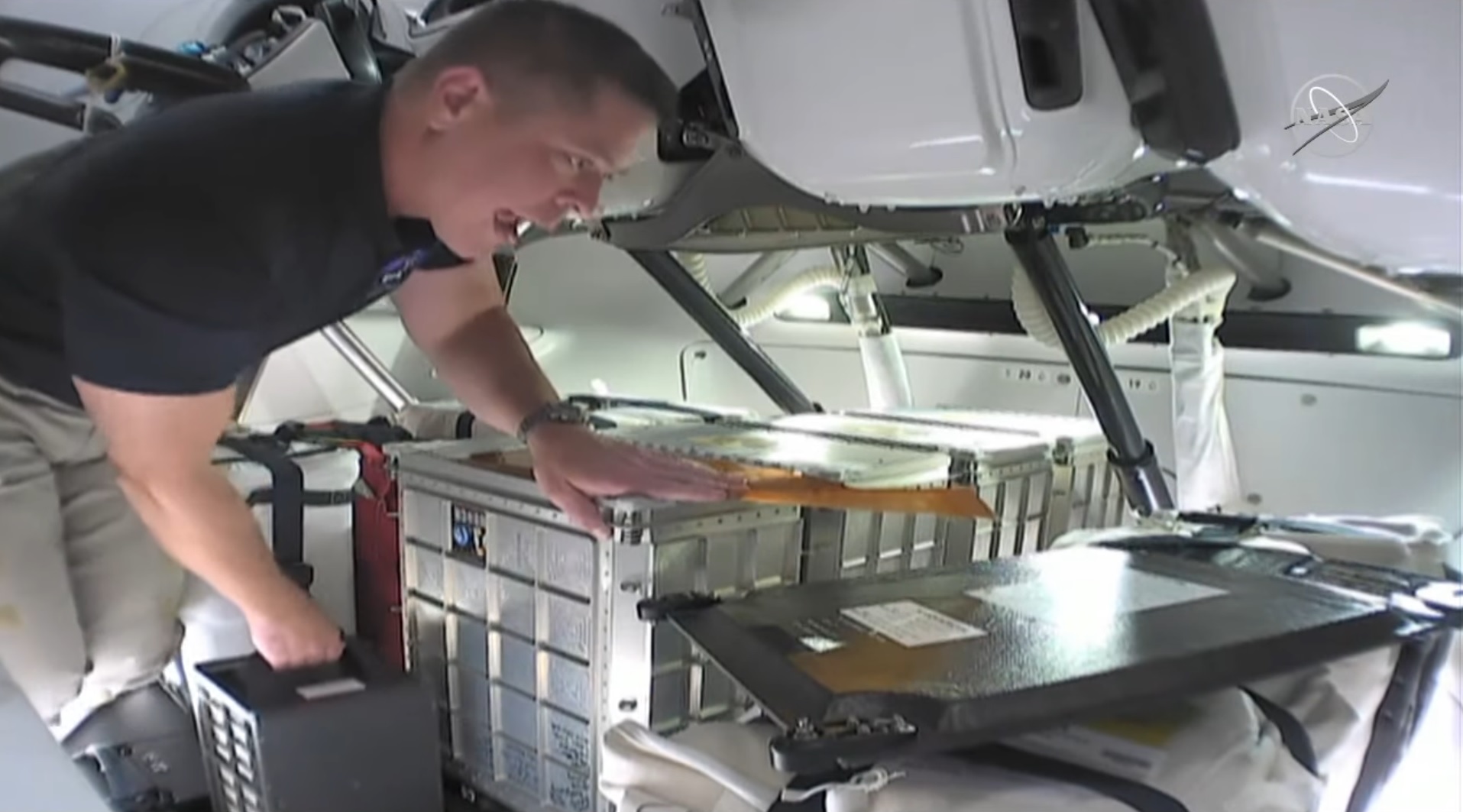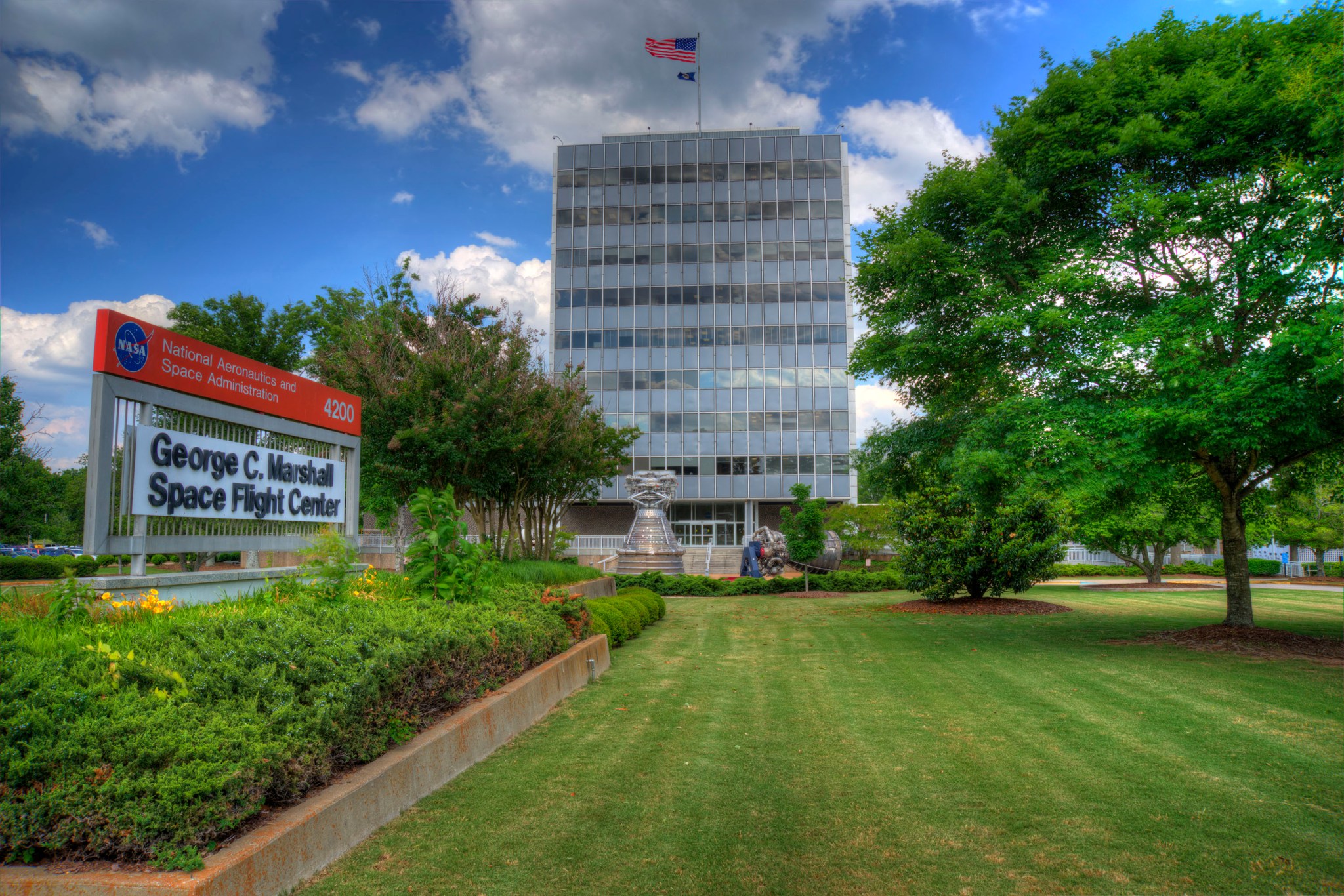In This Week’s Star
- Marshall Contributes to Historic Test Flight of SpaceX Crew Dragon
- Area High School Students Build Lockers for Summer Trip to Space Station
- Marshall Resumes Authorized Mission-Critical On-site Work
- From the Deep South to Deep Space: Reggie Alexander Says Partnership is Key to Exploration
- Marshall Assists in Upgrade of Space Station’s Coolest Experiment
- Hubble, Juno, Gemini Join Forces to Probe Jupiter’s Atmosphere
- This Week in NASA History: STS-91 Launches for Final Shuttle-Mir Docking – June 2, 1998
Marshall Contributes to Historic Test Flight of SpaceX Crew Dragon
For the first time in history, NASA astronauts have launched from American soil in a commercially built and operated American crew spacecraft. The launch was the first of astronauts from U.S. soil since the retirement of the space shuttle in 2011.
The SpaceX Crew Dragon spacecraft carrying NASA astronauts Robert Behnken and Douglas Hurley lifted off at 2:22 p.m. May 30, on SpaceX’s Falcon 9 rocket from Launch Complex 39A at NASA’s Kennedy Space Center. The astronauts docked to the International Space Station approximately 19 hours later at 9:16 a.m. May 31.
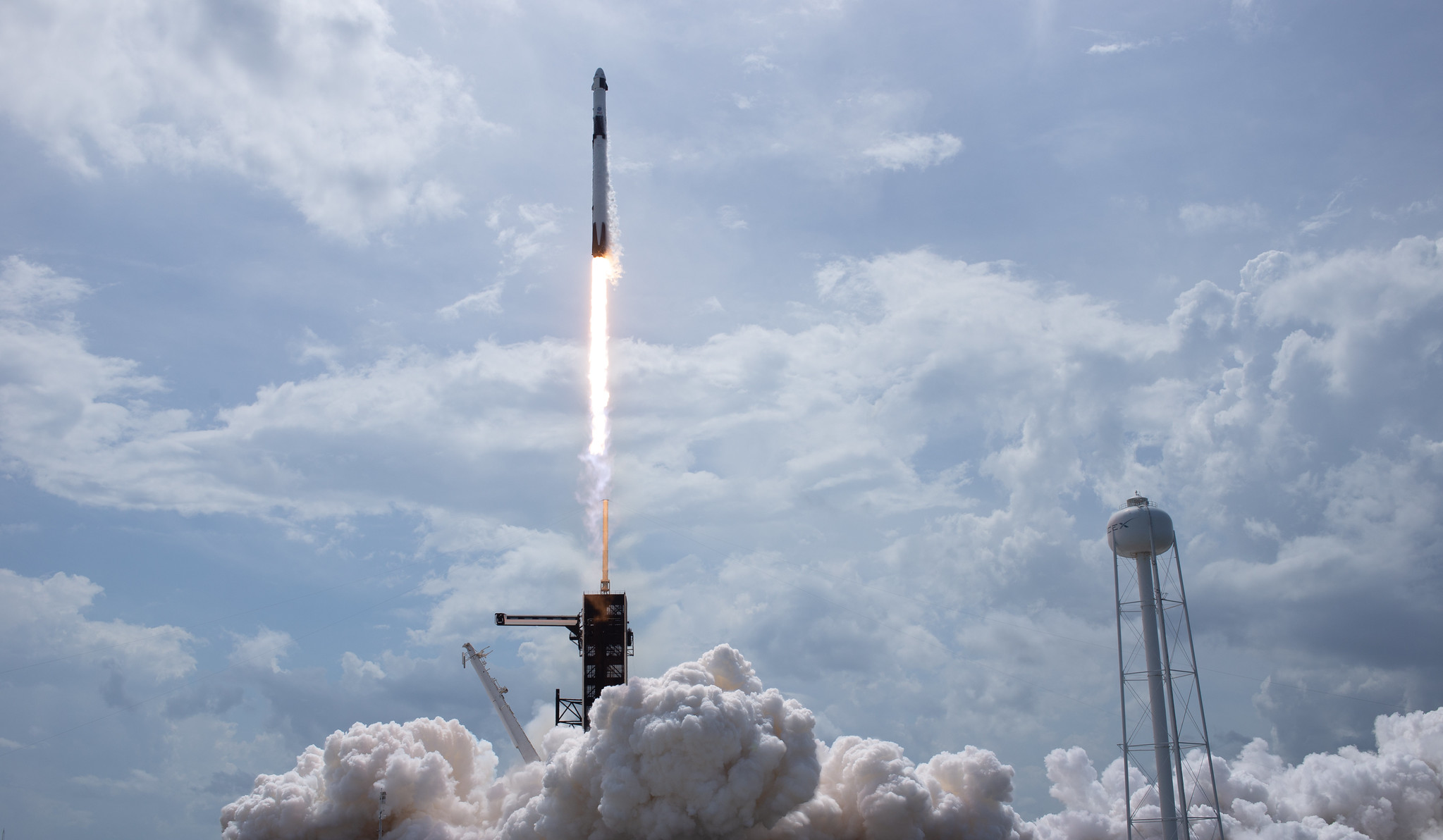
“I thank and congratulate Bob Behnken, Doug Hurley and the SpaceX and NASA teams for this significant achievement for the United States,” NASA Administrator Jim Bridenstine said. “The launch of this commercial space system designed for humans is a phenomenal demonstration of American excellence and is an important step on our path to expand human exploration to the Moon and Mars.”
Known as NASA’s SpaceX Demo-2, the mission is an end-to-end test flight to validate the SpaceX crew transportation system, including launch, in-orbit, docking and landing operations. This is SpaceX’s second spaceflight test of its Crew Dragon and its first test with astronauts aboard, which paves the way for its certification for regular crew flights to the station as part of NASA’s Commercial Crew Program. As SpaceX’s final flight test, it will validate all aspects of its crew transportation system, including the Crew Dragon, spacesuits, Falcon 9, launch pad 39A and operations capabilities.
A team at NASA’s Marshall Space Flight Center’s Huntsville Operations Support Center joined teams at Kennedy, SpaceX’s mission control center in Hawthorne, California, and NASA’s Johnson Space Center in monitoring the launch.
“I’m feeling so excited about this incredible accomplishment,” said Marshall’s Steve Gaddis, launch vehicle deputy manager for the Commercial Crew Program. “It’s taken many people and many years to get here. The Marshall team has contributed in many significant ways. Working with our SpaceX Commercial Crew partner, we improved the safety and reliability of the Merlin engines, stage propulsion, Draco and SuperDraco thrusters, life support system, the abort and flight termination systems, structures, materials and processes, fracture control and integrated performance analyses. I don’t believe there is one key system we have not made a contribution to.
“This was a team effort all the way,” Gaddis said. “Working with Kennedy and Johnson, together we have made NASA’s top priority a reality. I’m proud of how our center has performed and the contributions we have made.”
The Commercial Crew Program demonstrates NASA’s commitment to investing in commercial companies through public-private partnerships and builds on the success of American companies, including SpaceX, already delivering cargo to the space station.
“This is a dream come true for me and everyone at SpaceX,” said Elon Musk, founder and chief engineer of SpaceX. “It is the culmination of an incredible amount of work by the SpaceX team, by NASA and by a number of other partners in the process of making this happen. You can look at this as the results of a hundred thousand people roughly when you add up all the suppliers and everyone working incredibly hard to make this day happen.”
Behnken and Hurley will work with SpaceX to verify the spacecraft is performing as intended by testing the environmental control system, the displays and control system, and by maneuvering the thrusters, among other things. Crew Dragon is designed to dock autonomously, but the crews aboard the spacecraft and the space station diligently monitored the performance of the spacecraft as it approached and docked to the forward port of the station’s Harmony module.
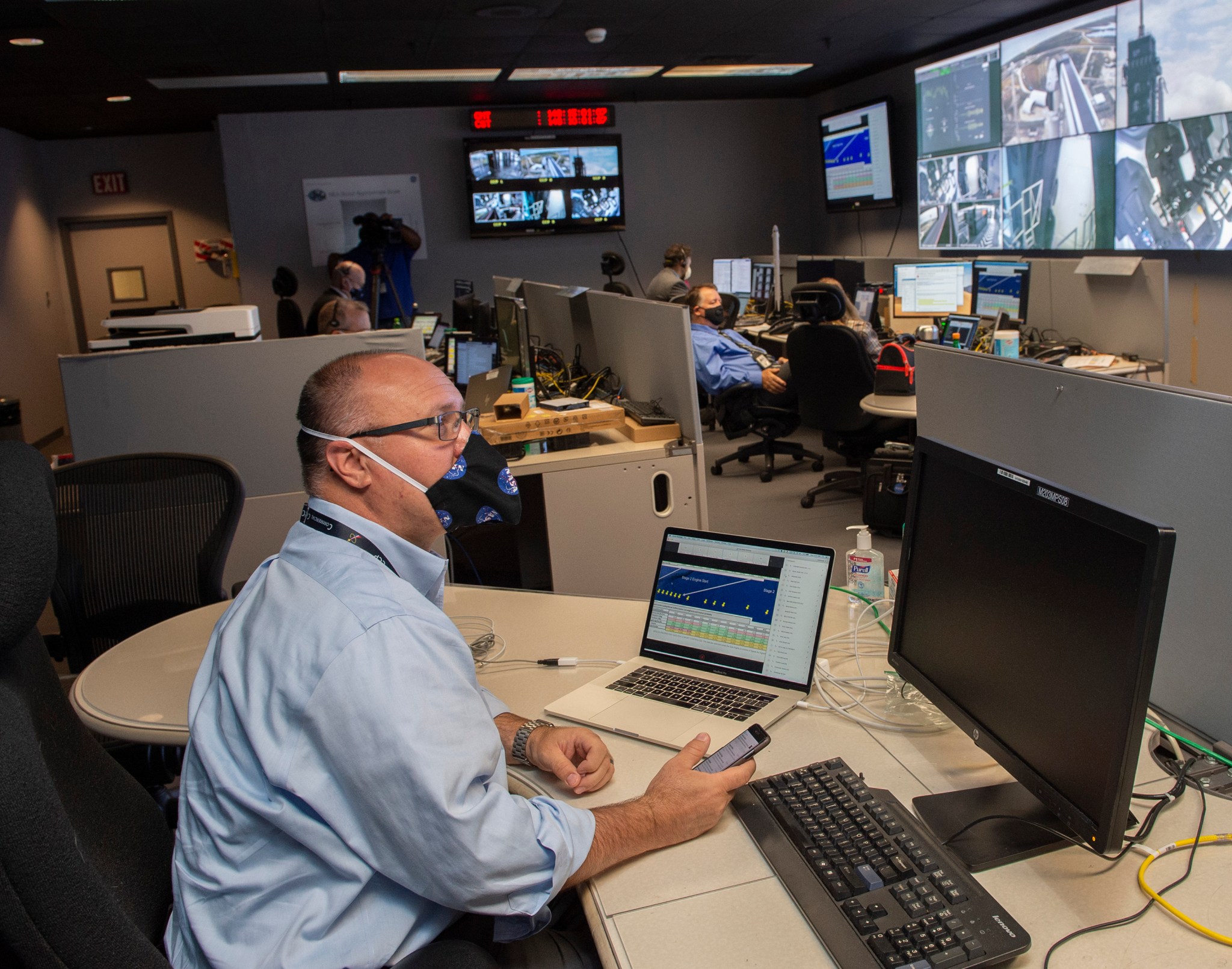
After successfully docking, the crew was welcomed aboard the station, where they became members of the Expedition 63 crew, which currently includes NASA astronaut Chris Cassidy.
While en route to the station, Behnken and Hurley took control of Crew Dragon for two manual flight tests, demonstrating their ability to control the spacecraft should an issue with the spacecraft’s automated flight arise. On May 30, while the spacecraft was coasting, the crew tested its roll, pitch and yaw. When Crew Dragon was about 0.6 miles below the station and moving around to the docking axis, the crew conducted manual in-orbit demonstrations of the control system in the event it were needed. After pausing, rendezvous resumed and mission managers made a final decision to proceed to docking as Crew Dragon approached 66 feet.
At the conclusion of the mission, Behnken and Hurley will board Crew Dragon, which will autonomously undock, depart the space station and reenter Earth’s atmosphere. Upon splashdown off Florida’s Atlantic coast, the crew will be picked up by the SpaceX recovery ship and returned to the dock at Cape Canaveral, Florida.
Learn more about NASA’s Commercial Crew program here.
Area High School Students Build Lockers for Summer Trip to Space Station
By Will Bryan
Pulling that final zipper closed on a stuffed suitcase or getting the tailgate of a packed car shut is a true feeling of victory at the start of any road trip. Sending supplies to the International Space Station — including on NASA’s Demo-2 mission that launched the first astronauts on SpaceX’s Crew Dragon capsule May 30 — requires a different packing method and special lockers to transport supplies.
Four such lockers, launched on the Demo-2 mission from NASA’s Kennedy Space Center, were built by students from around the country through NASA’s HUNCH — High school students United with NASA to Create Hardware — Program, including students from Huntsville, Athens, Cullman and Decatur. One additional student-built locker built by students at the same school will return to Earth from the space station at the end of the mission. The lockers contain important supplies for space station maintenance and daily operations.
“It is exciting for us and the students,” said Bob Zeek, NASA HUNCH co-founder and project resource manager at NASA’s Marshall Space Flight Center. “Even with 70 HUNCH-built lockers delivered to the International Space Station Program and 58 of those flying to the space station, the Demo-2 flight adds a new flavor,” he added.
Each locker is comprised of approximately 280 components — including 41 parts machined by the students and more than 200 rivets, fasteners and bearings. The pieces are manufactured with high precision to the tight tolerances required of any piece of hardware making the journey to the space station.
Students from Grissom High School in Huntsville created the rear close-out plates. Students from the Limestone County Career Technical Center in Athens performed the finishing on the close-out panels. Cullman Area Technology Center students manufactured the locker door close-out panels; three of these removable panels are on each locker. Students from the Career Academies of Decatur produced the aluminum top and bottom panels along with the stainless latch bolt studs. The studs keep the locker doors closed, while providing access to the rear-mounting bolts that are used to attach each locker into a payload rack.
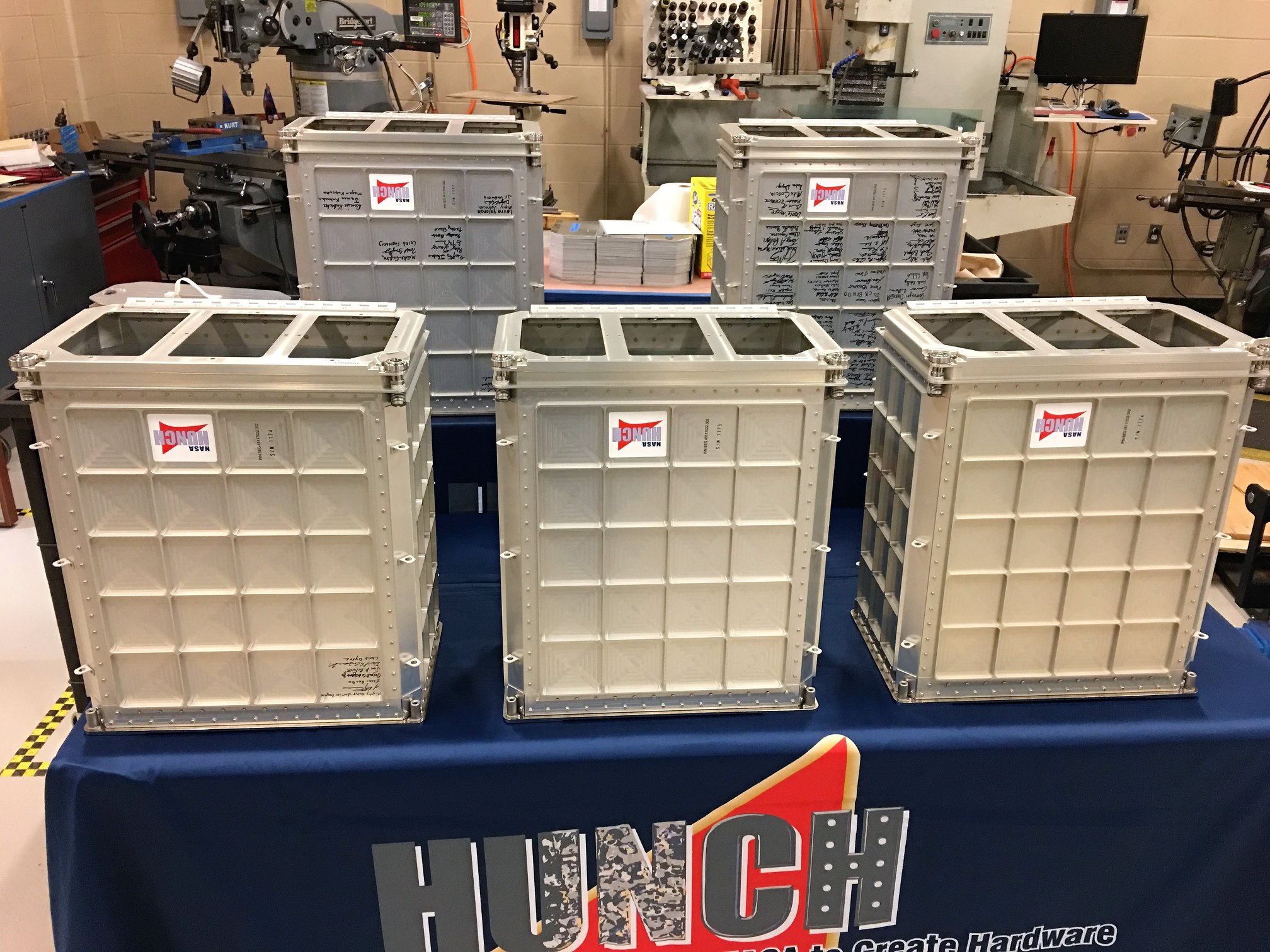
Industrial Machining Specialists — a commercial firm and a NASA HUNCH partner located near the Career Academies of Decatur — helps manufacture parts for SpaceX employing HUNCH graduates.
Launched in the four lockers — which were stowed beneath the seats of astronauts Doug Hurley and Bob Behnken — were:
- Liquid cooling ventilation garments used by astronauts to help maintain proper body temperature during spacewalks.
- Glenn Harnesses, which are used to ensure astronauts can properly run on the space station’s treadmill, an activity that helps to keep their bones and muscles strong during their time in space.
- Shoes and other miscellaneous items.
Each student and instructor signs the lockers they helped build, and when the units are in orbit, the astronauts take pictures with the lockers, providing the builders a memento of their efforts.
HUNCH is also important for the International Space Station Program.
“We are contracted to deliver 40 or more lockers per year, and that is up from 20 required before the Commercial Crew Program and other resupply vehicles came online,” Zeek said.
Despite the coronavirus pandemic, which forced schools to finish their academic year virtually, Zeek and fellow Marshall HUNCH mentor, Bill Gibson, were allowed to complete locker production to meet the flight deadline. They used the fabrication facility set up at the Career Academies of Decatur.
“We picked up where the students left off,” Zeek said.
HUNCH’s goal is to empower and inspire students through a project-based learning program and by providing opportunities to students to play an active role in the space program. It started in 2003 with two schools in Alabama and one in Houston. Now, 277 schools in 44 states participate in six focus areas — design and prototyping, software, hardware, sewn flight articles, video and media and culinary arts. The program has produced more than 600 items for flight or training for the space station program — representing approximately 20,000 individual flight parts — with nearly 500 parts flown to the space station or delivered for flight. For more information about NASA HUNCH, visit here.
Bryan, an ASRC Federal/Analytical Services employee, supports the Office of Strategic Analysis & Communications.
Marshall Resumes Authorized Mission-Critical On-site Work
By Taylor Goodwin
As NASA’s Marshall Space Flight Center enters its 12th week of mandatory telework for the majority of the workforce to mitigate the spread of COVID-19, the center’s leadership has refined an in-depth, phased strategy for returning to on-site work.
The leadership team is consulting daily with NASA Headquarters; Marshall programs, projects and partners; and Redstone Arsenal leaders to ensure all planning and decision-making are conducted in a coordinated, methodical, risk-based and data-driven way. Until specifically authorized for on-site work, team members should continue teleworking.
Steve Miley, Marshall’s associate director, is managing the return-to-site process. Joined by Marshall Director Jody Singer, Deputy Director Paul McConnaughey and Marshall Occupational Health Officer David Thaxton, he provided details of the planning process and decision-making in the center’s latest virtual town hall.
“The agency response framework was designed with the utmost care, caution and concern for the health and safety of our workforce,” Miley said, “and that has not changed. We are capturing lessons learned as we discover better ways to work and protect ourselves. The bottom line is that collaboration, transparency and communication will win the day — and that is how we will continue moving forward.”
Recommendations and guidance from the Centers for Disease Control and Prevention and the medical community have evolved as knowledge and understanding of COVID-19 has progressed. City and state governments have begun cautiously reopening selected areas of communities in a controlled and observant way. With ongoing evaluation, Marshall is finding ways to safely do the same.
The decision to restart some on-site work was made in consultation with occupational safety, labor representation and management of both government employees and contractors to identify potential risks and required mitigation precautions. Additionally, each work package is uniquely detailed with a safety plan and presented to center leadership for approval. Only after meeting all of these criteria to prove that the work could be performed safely was the authority to proceed given.
Mission-critical on-site work has slowly and safely resumed over the last several weeks. The Space Launch System core stage production activities — particularly the critical path deliverables to support the Artemis program — are carefully resuming at NASA’s Michoud Assembly Facility. At Marshall, progress has resumed for several SLS components — including the liquid oxygen tank structural testing, launch vehicle stage adapter updates, facility cleaning and preparations and more. Progress on the Imaging X-ray Polarimetry Explorer has resumed as well.
“We have been carefully evolving the return to work plans for both Marshall and Michoud over time,” Miley said. “We are phasing in workers slowly, and monitoring the COVID-19 situation in these areas extremely closely as we do so.”
As team members are permitted to return to site to work, they are expected to stay at home if they are sick or have recently been in contact with someone who tested positive for COVID-19. Team members should keep a distance of at least 6 feet between colleagues, practice effective handwashing and avoid touching their face — including the eyes, nose and mouth. The center will provide a mask for those required to perform on-site mission-critical work in which they cannot maintain a distance of 6 feet. However, due to a limited supply of masks, anyone coming to site should bring their own cloth face covering to wear when maintaining a 6-foot distance is not possible. A complete list of guidelines is available on Inside Marshall and the NASA Safety Center site.
Redstone Arsenal began its phased approach to reopening May 25.
“Our continued vigilance and safeguards — including continued teleworking for many and urging social distancing, wearing masks and taking other precautions to stem the spread of the virus — is crucial to our ability to continue to meet our important NASA missions,” Miley said.
Team members should continue to monitor Inside Marshall and NASAPeople for updated information.
Goodwin, an ASRC Federal/Analytical Services employee, supports the Office of Strategic Analysis & Communications.
From the Deep South to Deep Space: Reggie Alexander Says Partnership is Key to Exploration
By Rick Smith
Growing up in tiny Kossuth, Mississippi — a farming village of some 200 people — Reggie Alexander recalls afternoons with his brother, exploring the galaxy on TV with the starship Enterprise crew on “Star Trek.”
Back then, he never imagined he would one day guide development of spacecraft and propulsion technologies supporting exploration missions, including those part of NASA’s Artemis program. The agency’s lunar program includes landing the first woman and next man on the Moon in 2024, establishing sustainable lunar exploration by the end of the decade and getting ready for human exploration of Mars.
Since fall 2019, Alexander has managed the Partnerships & Formulation Office, part of the Science and Technology Office at NASA’s Marshall Space Flight Center. His team and its industry partners are pursuing some of the most ambitious work Marshall has undertaken since the Apollo-era Saturn rockets and space systems designed and tested in the 1960s.
“Working with our commercial partners, we analyze past development tactics and engineering documentation to formulate strategies for developing new hardware and propulsion systems and solutions,” he said. The team incorporates the needs and insights of scientists and engineers across the agency, determining not just how best to launch astronauts and cargo to their destinations, but how their mission milestones and goals may refine or enhance aerospace technologies farther in the future.
“This is a whole new way of partnering to do business,” Alexander said. “We set out to be more strategic in developing new work, executing current tasks and partnering more effectively with our commercial and academic counterparts.”
Among its pursuits, his office is working to support commercial development of future human landing systems, one of which will begin carrying Artemis astronauts to the Moon’s surface in 2024.
“With a sustained lunar presence, how do we facilitate that? What routine and special activities are involved? How do we best serve the mission and the explorers?” he said. “We ask these questions as a team — and then deliver the answers.”
The Partnerships & Formulation Office also works with lunar and planetary scientists to explore options for finding and using in situ resources — materials available on other worlds to reduce the need to haul heavy, costly supplies from Earth. It also helps to refine and reduce risks associated with nuclear thermal propulsion technologies, which could speed up human journeys into deep space.
Alexander’s team also pursues new cryofluid management techniques — the ground-based and in-space storage and transfer of supercooled liquid propellants — and assesses how best to prepare for crewed missions to Mars using the lessons being learned right now in the pursuit of new lunar expeditions.
“It’s exciting every day to look at our resources and breadth of expertise and put them to work, continuing Marshall’s contributions to the nation’s journey of exploration,” he said.
During his 30-year career, Alexander has held a number of key leadership posts, including propulsion system lead for NASA’s X-37 — an advanced technology flight demonstrator now being tested by the U.S. Air Force — and manager of Marshall’s Advanced Concepts Office. He helped lead concept development for the Space Launch System, the rocket set to power the Artemis missions, and was lead systems engineer for a project developing technologies to ferry crew to the International Space Station.
Alexander earned a bachelor’s degree in mechanical engineering from Mississippi State University in Starkville in 1989 and a master’s degree in aerospace engineering from the University in Alabama in Huntsville in 1998. He moved to North Alabama in 1988 as a co-op with the Tennessee Valley Authority, before joining NASA as a thermal analyst in 1990. He completed a Senior Executive Fellows course in 2012 at Harvard University in Cambridge, Massachusetts, which helped cement his desire to stay at NASA in a leadership capacity.
“I realized what an honor it was to be part of a great legacy of engineers who put men on the Moon and today are planning the future of space transportation and solar system exploration,” he said. “I spend my days doing work most engineers only dream of, creating and enabling our future in space. It’s the most fun anyone could ever have.”
Smith, an ASRC Federal/Analytical Services employee, supports the Office of Strategic Analysis & Communications.
Marshall Assists in Upgrade of Space Station’s Coolest Experiment
NASA’s Cold Atom Laboratory, a facility for fundamental physics experiments on the International Space Station, recently underwent a major hardware upgrade with the help of astronauts Christina Koch and Jessica Meir.
Months before the installation, members of the Cold Atom Lab team and the Payload Operations Integration Center at NASA’s Marshal Space Flight Center created instructions for Koch and Meir.
By chilling atom clouds to just above absolute zero, the Cold Atom Lab enables scientists to directly observe unique atomic behaviors, helping answer questions about how the world works at the smallest scales.
On Earth, that task would fall to engineers with years of experience handling the components. To avoid bringing the facility back from the space station, the mission team guided Koch and Meir through the installation via live video conference from NASA’s Jet Propulsion Laboratory.
“With this upgrade, we were effectively replacing the heart of Cold Atom Lab, and everything had to go perfectly,” said Kamal Oudrhiri, project manager for Cold Atom Lab at JPL.
Physicists use ultracold atom facilities on Earth for a variety of experiments that probe the fundamental behaviors of atoms. Chilling atoms to within one 10-billionth of a degree above 0 Kelvin — minus 459.67 degrees Fahrenheit, or minus 273.15 degrees Celsius — causes them to slow down significantly, making them easier to study. At those temperatures, some atoms can also form a fifth state of matter, called a Bose-Einstein condensate that does not exist in nature. Bose-Einstein condensates provide a unique window into the strange world of quantum mechanics, which governs the universe at very small scales.
Cold Atom Lab is the first ultracold atom facility in Earth orbit. In the weightless environment of space, atoms aren’t pulled down by gravity — so they exist in their unbound, ultracool state for long periods of time. This characteristic enables scientists to observe their natural behaviors in a way that is not possible on Earth.
“With Cold Atom Lab we’re looking for new physics that pops up only when you can study the universe at extremely fine scales,” said Jason Williams, the lead scientist for the Cold Atom Lab atom interferometer at JPL.
Cold Atom Lab consists of two metal boxes, the larger of which is called the Science Instrument. Inside is a compartment called the Science Module, which is where the atoms are cooled and the science takes place.
To complete the upgrade, Koch and Meir had to gently maneuver the sizeable Science Instrument out of its operating location, remove the old Science Module and replace it with the new one.
“There are so many details that it’s difficult to even explain,” said Jim Kellogg, launch vehicle and space station integration lead for Cold Atom Lab at JPL. “We had to consider details such as what tools will the crew need? If we need to borrow a tool from another group on the space station, how do we do that? Where is everything going to be temporarily stowed while the astronauts are working on our instrument? Every detail needs to be documented and signed off, and the people at Marshall Space Flight Center supported us through every step of the way.”
To reinstall the Science Instrument, Koch — working alone — had to inspect and connect 11 precision fiber optic cables. The glass fiber cores of the cables are about one-20th the diameter of a human hair — and if any were broken, contaminated or scratched, it could potentially result in mission-ending failures.
And how did the installation turn out? So far, it looks like a complete success.
“This was an extremely difficult endeavor that required a dedicated team on the ground and two committed astronauts,” Oudrhir said. “If this installation hadn’t gone well, there would have been no second chance. We’d have to bring the entire flight instrument back to Earth, and that could have set us back at least two years.”
Once testing and analysis of the new hardware are complete in the coming weeks, the team expects the science groups that use the Cold Atom Lab to begin taking data again.
Designed and built at JPL, Cold Atom Lab is sponsored by the Space Life and Physical Sciences Research and Applications division of NASA’s Human Exploration and Operations Mission Directorate at NASA Headquarters and the International Space Station Program at NASA’s Johnson Space Center.
Hubble, Juno, Gemini Join Forces to Probe Jupiter’s Atmosphere
NASA’s Hubble Space Telescope and the ground-based Gemini Observatory in Hawaii have teamed up with the Juno spacecraft to probe the mightiest storms in the solar system, taking place more than 500 million miles away on the giant planet Jupiter.
A team of researchers led by Michael Wong at the University of California in Berkeley, and including Amy Simon of NASA’s Goddard Space Flight Center, are combining multi-wavelength observations from Hubble and Gemini with close-up views from Juno to gain new insights into turbulent weather on this distant world. The results were published in April in The Astrophysical Journal Supplement Series.
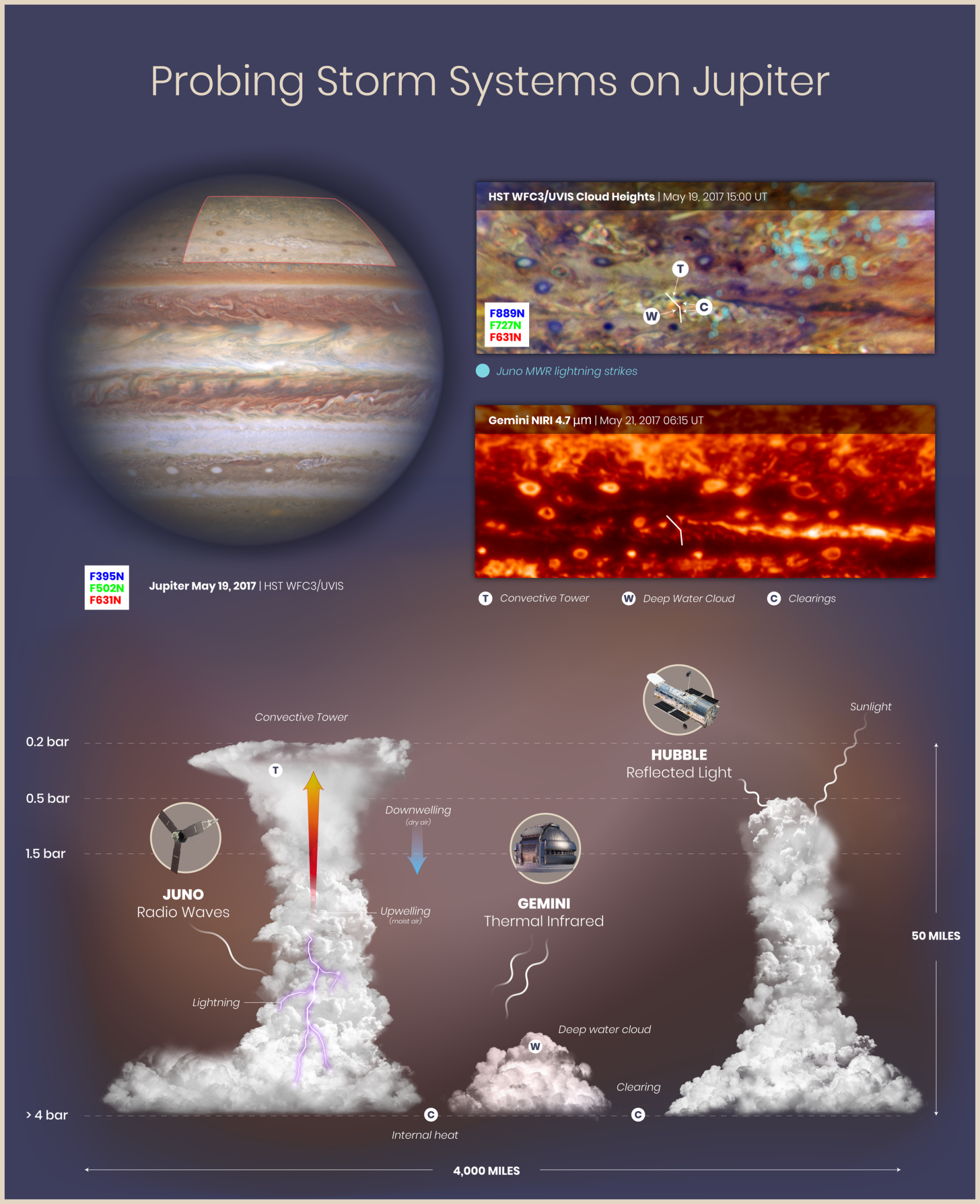
Upper left: This natural-color (visible light) image of the full disk of Jupiter was captured by Hubble’s Wide Field Camera 3 on May 19, 2017. The highlighted region in the northern hemisphere is shown in the two details to the right.
Upper right: The Hubble Space Telescope detail shows cloud heights in Jupiter’s atmosphere. High-altitude clouds reflect multiple wavelengths of visible and near-infrared light and appear lighter-colored in the image. Deeper clouds reflect less light and appear darker. Lightning flashes based on radio wave detections by Juno’s Microwave Radiometer are shown in teal.
Middle right: This Gemini image of the same region, captured on May 21, 2017, shows thermal infrared light (4.7 µm) emitted from Jupiter. Brighter areas correspond to reduced cloud thickness, where more thermal emission from warm, deep atmospheric layers is able to escape to space.
Bottom: This illustration of lightning, convective towers, deep water clouds, and clearings in Jupiter’s atmosphere is based on data from Juno, Hubble, and Gemini, and corresponds to the transect (angled white line) indicated on the Hubble and Gemini map details. The combination of observations can be used to map the cloud structure in three dimensions and infer details of atmospheric circulation. Thick, towering clouds form where moist air is rising (upwelling and active convection). Clearings form where drier air sinks (downwelling). The clouds shown rise five times higher than similar convective towers in the relatively shallow atmosphere of Earth. The region illustrated covers a horizontal span one-third greater than that of the continental United States. Credits: NASA, ESA, M.H. Wong (UC Berkeley), A. James and M.W. Carruthers (STScI), and S. Brown (JPL)
“We want to know how Jupiter’s atmosphere works,” Wong said. The constant Jovian storms are gigantic compared to those on Earth, with thunderheads reaching 40 miles from base to top — five times taller than typical thunderheads on Earth — and powerful lightning flashes up to three times more energetic than Earth’s largest “superbolts.”
Like lightning on Earth, Jupiter’s lightning bolts act like radio transmitters, sending out radio waves as well as visible light when they flash across the sky.
Every 53 days, Juno races low over the storm systems, detecting radio signals known as “sferics” and “whistlers,” which can be used to map lightning even on the planet’s day side or from deep clouds where flashes are not otherwise visible. Meanwhile, Hubble and Gemini watch from afar, capturing high-resolution global views of the planet that are key to interpreting Juno’s close-up observations.
“Juno’s microwave radiometer probes deep into the planet’s atmosphere by detecting high-frequency radio waves that can penetrate through the thick cloud layers,” Simon said. “The data from Hubble and Gemini can tell us how thick the clouds are and how deep we are seeing into the clouds.”
By mapping lightning flashes detected by Juno onto optical images taken by Hubble and thermal infrared images captured at the same time by Gemini, researchers have shown that lightning outbreaks are associated with a three-way combination of structures: deep clouds made of water; large convective towers caused by upwelling of moist air; and clear regions presumably caused by downwelling of drier air outside convective towers.
Wong thinks lightning is common in turbulent areas known as folded filamentary regions. “These cyclonic vortices could be internal energy smokestacks, helping release internal energy through convection,” he said.
The ability to correlate lightning with deep water clouds also gives researchers another tool for estimating the amount of water in Jupiter’s atmosphere, which is vital for learning how such gas and ice giants formed — and thus the solar system as a whole.
While much has been gleaned about Jupiter from previous space missions, many details — including how much water is in the deep atmosphere, exactly how heat flows from the interior and what causes certain cloud colors and patterns — remain a mystery. The new findings provide insight into the atmosphere’s dynamics and three-dimensional structure.
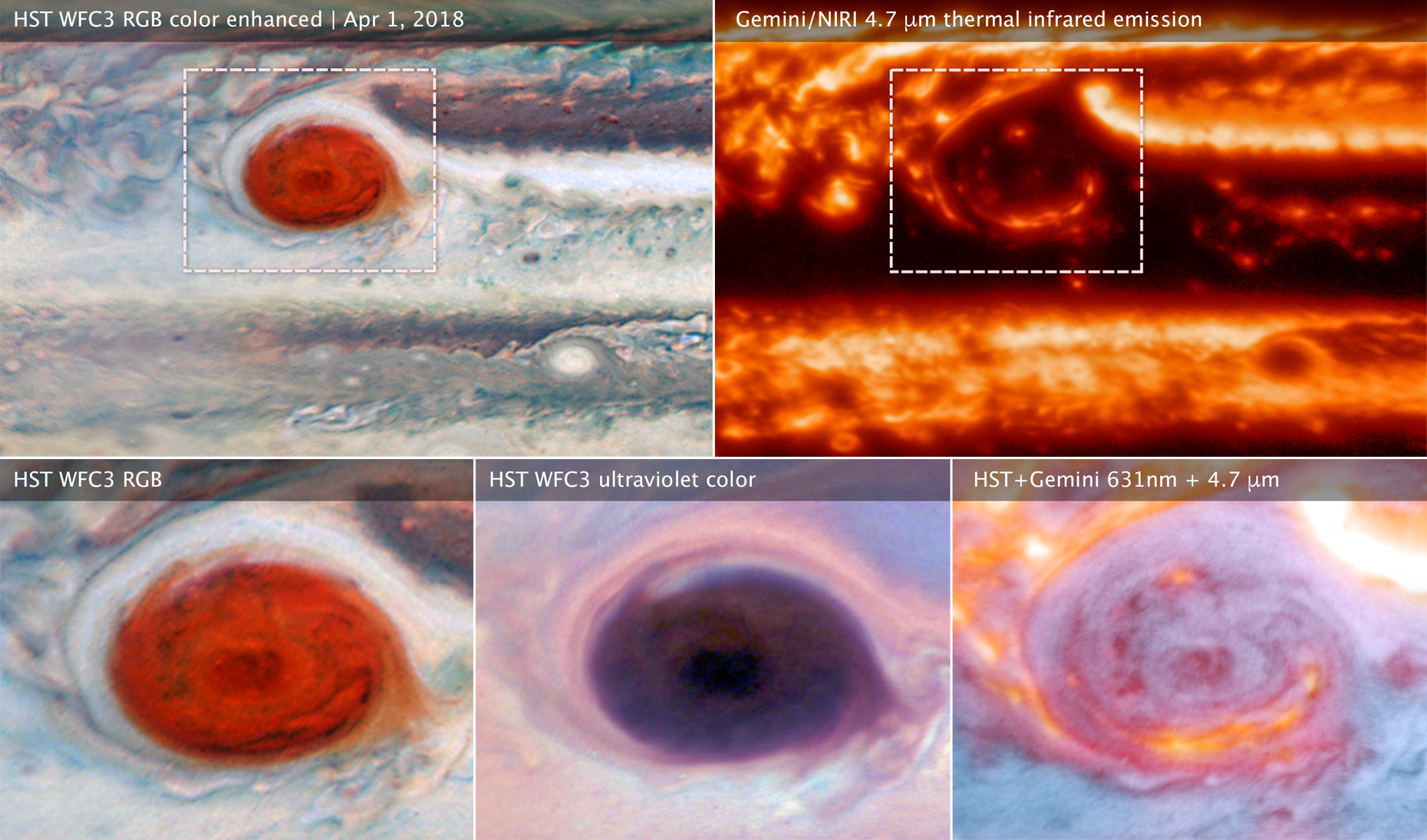
Upper left (wide view) and lower left (detail): The Hubble image of sunlight (visible wavelengths) reflecting off clouds in Jupiter’s atmosphere shows dark features within the Great Red Spot.
Upper right: A thermal infrared image of the same area from Gemini shows heat emitted as infrared energy. Cool overlying clouds appear as dark regions, but clearings in the clouds allow bright infrared emission to escape from warmer layers below.
Lower middle: An ultraviolet image from Hubble shows sunlight scattered back from the hazes over the Great Red Spot. The Great Red Spot appears red in visible light because these hazes absorb blue wavelengths. The Hubble data show that the hazes continue to absorb even at shorter ultraviolet wavelengths.
Lower right: A multiwavelength composite of Hubble and Gemini data shows visible light in blue and thermal infrared in red. The combined observations show that areas that are bright in infrared are clearings or places where there is less cloud cover blocking heat from the interior.
The Hubble and Gemini observations were made to provide a wide-view context for Juno’s 12th pass (Perijove 12). Credits: NASA, ESA, and M.H. Wong (UC Berkeley) and team
With Hubble and Gemini observing Jupiter more frequently during the Juno mission, scientists also can study short-term changes like those in the Great Red Spot. It was not clear from previous missions whether dark features in the spot, which appear, disappear and change shape over time, are caused by some unidentified material in the high cloud layer, or if they are gaps in the clouds themselves — windows into a darker layer below.
Now, with the ability to compare visible-light images from Hubble with thermal infrared images from Gemini captured within hours of each other, it is possible to answer the question. Regions that are dark in visible light are very bright in infrared, indicating they are, in fact, holes in the cloud layer, from which heat rising from Jupiter’s interior is free to escape into space — and therefore appears bright in Gemini images.
“It’s kind of like a jack-o-lantern,” Wong said. “You see bright infrared light coming from cloud-free areas, but where there are clouds, it’s really dark in the infrared.”
Hubble and Gemini monitor the planet as a whole, providing real-time base maps in multiple wavelengths for reference for Juno’s measurements in the same way that Earth-observing weather satellites provide context for the National Oceanic and Atmospheric Administration’s high-flying hurricane hunters. Regular imaging of Jupiter by Hubble and Gemini in support of Juno is proving valuable for studying other weather phenomena as well, including changes in wind patterns, characteristics of atmospheric waves and circulation of various gases in the atmosphere.
Because Hubble and Gemini observations have proved so valuable for interpreting Juno data, Wong and his colleagues are making all their processed data readily accessible to other researchers through the Mikulski Archives for Space Telescopes at the Space Telescope Science Institute in Baltimore.
Read the entire NASA feature about the new findings here.
Goddard manages Hubble, a joint project between NASA and the European Space Agency. Science operations are led by the Space Telescope Science Institute. NASA’s Marshall Space Flight Center was responsible for Hubble’s overall design, development and construction. Juno is part of NASA’s New Frontiers Program, which is managed by Marshall for the agency’s Science Mission Directorate. NASA’s Jet Propulsion Laboratory manages the Juno mission for the Southwest Research Institute in San Antonio.
This Week in NASA History: STS-91 Launches for Final Shuttle-Mir Docking – June 2, 1998
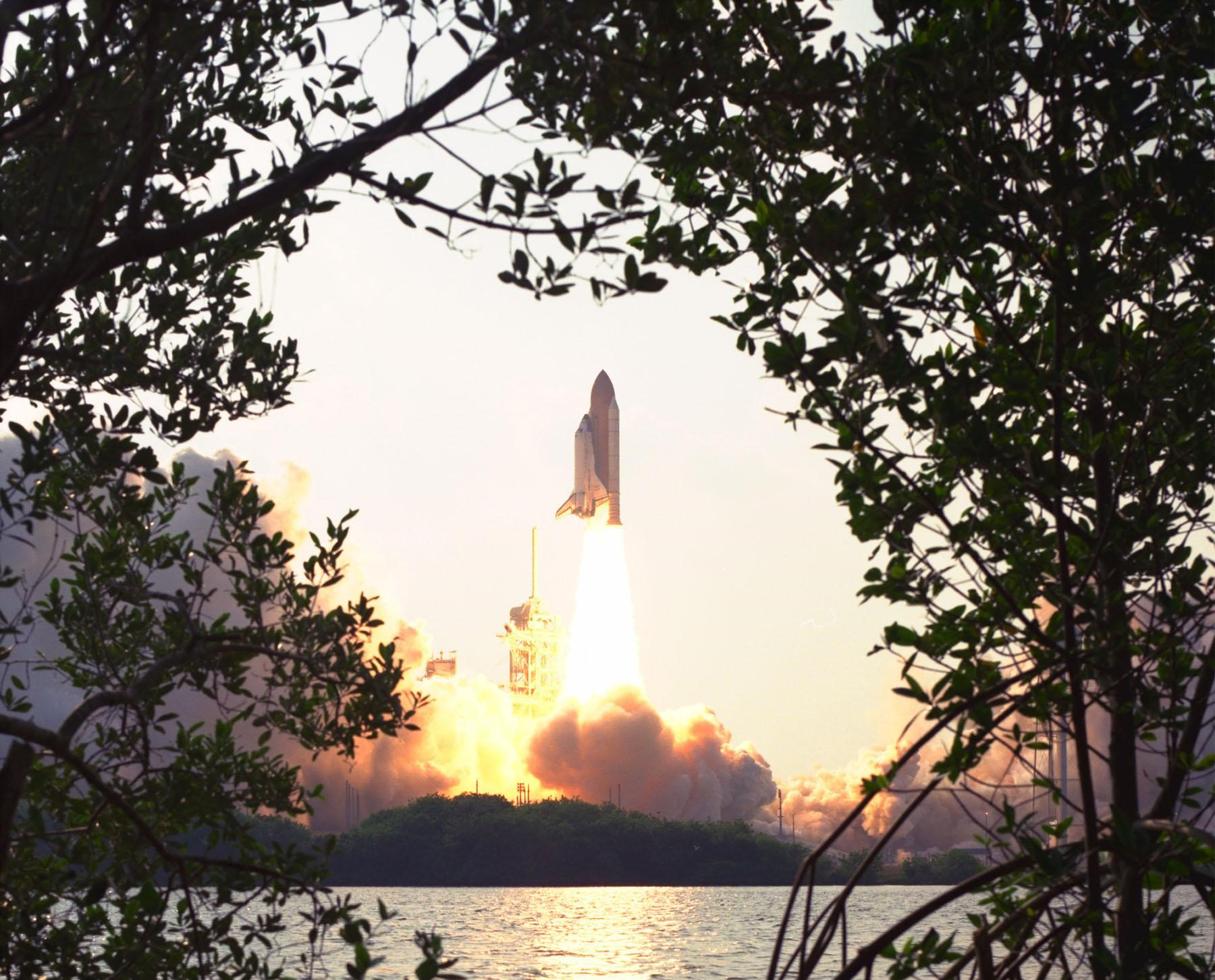
This week in 1998, space shuttle Discovery, mission STS-91, launched from NASA’s Kennedy Space Center on the ninth and final docking of a shuttle and Russia’s Mir space station. The successful nine-day mission featured the first in-orbit test of the Alpha Magnetic Spectrometer and the first use of the space shuttle super lightweight external tank. Today, the Payload Operations Integration Center at NASA’s Marshall Space Flight Center serves as “science central” for the International Space Station, working 24/7, 365 days a year in support of the orbiting laboratory’s science experiments. After 20 years of continuous human presence, the space station remains the sole space-based proving ground and stepping stone toward achieving the goals of the Artemis program. The NASA History Program is responsible for generating, disseminating and preserving NASA’s remarkable history and providing a comprehensive understanding of the institutional, cultural, social, political, economic, technological and scientific aspects of NASA’s activities in aeronautics and space. For more pictures like this one and to connect to NASA’s history, visit the Marshall History Program’s webpage. (NASA)



























